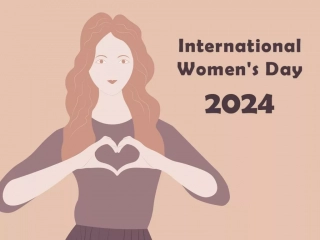
Understanding and Managing Stereotypic Behavior in Autism
Learn about the assessment and treatment of repetitive (stereotypic) behavior associated with autism, including the functions of stereotypy and when it becomes problematic. Discover strategies for addressing stereotypic behavior that interferes with daily functioning and social interactions.
Uploaded on | 1 Views
Download Presentation

Please find below an Image/Link to download the presentation.
The content on the website is provided AS IS for your information and personal use only. It may not be sold, licensed, or shared on other websites without obtaining consent from the author. If you encounter any issues during the download, it is possible that the publisher has removed the file from their server.
You are allowed to download the files provided on this website for personal or commercial use, subject to the condition that they are used lawfully. All files are the property of their respective owners.
The content on the website is provided AS IS for your information and personal use only. It may not be sold, licensed, or shared on other websites without obtaining consent from the author.
E N D
Presentation Transcript
Assessment and Treatment of Repetitive (Stereotypic) Behavior Associated with Autism Gregory P. Hanley. Ph.D., BCBA-D For more information go to: www.practicalfunctionalassessment.com Utah Neuropsychiatric Institute Autism Intervention Program for Professionals November, 2016
Persons diagnosed with Autism often engage in repetitive acts that appear to serve no function
These acts are collectively referred to as stereotypy due to the formal similarity of the acts and the periodicity with which they are emitted
HFA = High functioning autism LFA =Low functioning autism DLD = Developmental language disorder NALIQ = Non-autistic low IQ
Stereotypy can serve different functions From Hanley, Iwata, and McCord, JABA, 2003, p. 166
Stereotypy is usually maintained by sensory (automatic) reinforcement)
When is Stereotypy a Problem? .when it is exhibited with impairingfrequency
When is Stereotypy a Problem? .when it is exhibited with impairingfrequency when it interferes with attempts to teach skills or concepts
When is Stereotypy a Problem? .when it is exhibited with impairingfrequency when it interferes with social interactions
When is Stereotypy a Problem? .when it is exhibited with impairingfrequency when the prohibition of stereotypy results in more serious problem behavior (DeLeon et al., 2011)
Some applications of the model Three teenagers Jon, Patrick, & Edward Stereotypy Hand flapping, finger tapping or flicking, body rocking, mouthing, eye pressing, ear holding
Step 1: Functional analysis 10 14 Attention Escape Alone Control 12 8 10 Responses per min Responses per min 6 (Stereotypy) (Stereotypy) 8 6 4 4 Attention Escape Alone Control 2 2 Patrick Jon 0 0 10 2 4 6 8 10 12 3 6 9 12 15 Attention Escape Alone Control Sessions Sessions 8 Conclusion Stereotypy is probably maintained by automatic reinforcement Responses per min 6 (Stereotypy) 4 2 Edward 0 3 6 9 12 Sessions
Step 2: Conduct a preference assessment See these studies for the successful treatment of stereotypy by providing free access to materials identified via preference assessment Favell, McGimsey, & Schell (1982) AIDD Piazza, Adelinis, Hanley, Goh, & Delia (2000) JABA Roscoe, Iwata, & Goh (1999) JABA
Step 2: Preference Assessment 300 Edward Patrick Jon 250 Simple Engagement Duration (in sec) 200 150 100 50 14 12 Response per min 10 (Stereotypy) 8 6 4 2 Legos Beads Stamps Stickers Matching Lite Brite Shape Sorter Interstars Etch-a-sketch Cups Dinos Beads Links Stamps Play Doh Lite Brite Interstars Legos Beads Lacing Links Stamps Lite Brite Control Interstar Shape Sorter Items Items Items
Step 2: Preference Assessment 300 Edward Patrick Jon 250 Simple Engagement Duration (in sec) 200 Conclusion 150 100 Reinforcers earned via item engagement 50 were neither substitutable for nor did they effectively compete with reinforcers earned via stereotypy 14 12 Response per min 10 (Stereotypy) 8 6 4 2 Legos Beads Stamps Stickers Matching Lite Brite Shape Sorter Interstars Etch-a-sketch Cups Dinos Beads Links Stamps Play Doh Lite Brite Interstars Legos Beads Lacing Links Stamps Lite Brite Control Interstar Shape Sorter Items Items Items
Step 3: Add Prompting of Item Engagement See these studies for the successful application of prompting engagement with freely available toys to address stereotypy Britton, Carr,, Landaburu, & Romick (2002) BI Horner (1980) JABA Lindberg, Iwata, & Kahng (1999) JABA
Step 3: Add Prompting of Item Engagement Conclusion: Stereotypy persisted, so .. prompting apparently did not result in access to more or better reinforcers for item engagement
Step 4: Alter consequence of stereotypy-- add blocking See these studies for the successful treatment of stereotypy by blocking stereotypy Lerman, & Iwata (1996) JABA Reid, Parsons, Phillips, & Green (1993) JABA Roscoe, Iwata, & Goh (1999) JABA
Step 4: Alter consequence of stereotypy-- add blocking Conclusion: Stereotypy persisted or worsened Why? Interpretation of functional properties of stereotypy was incorrect Only saw early stage of extinction Are not removing all reinforcers (there were integrity breaches) Motivation to produce automatic reinforcement was high with no other way to produce similar reinforcers
Step 5: Add differential reinforcement to strengthen some desirable behavior See these studies for the successful treatment of stereotypy via differential reinforcement Charlop, Kurtz, & Casey (1990) JABA Hanley, Iwata, Thompson, & Lindberg (2000) JABA Wolery, Kirk, & Gast (1985) JADD
The treatment activities prompting (teaching) blocking while teaching earned access to stereotypy can then be used to teach more complex play skills
# of Rs / Form Requirements 10 / 2 cubes Treatment for Shaping Specific Forms of Functional Engagement 20 9 8 15 7 6 10 / I-bar on posts (1 cube) 5 Responses per min / 4 posts on I-bar 4 / 3 posts on I-bar 3 5 2 / 2 posts on I-bar / 1 post on I-bar 1 0 Baseline 20 15 Jon Stereotypy Specific Functional Engagement 10 5 Prompted SFE 0 10 20 30 40 50 60 70 80 90 100 110 120 Sessions
# of Rs / Form Requirements Treatment for Shaping Specific Forms of Functional Engagement 15 / 2nd House 12 11 12 10 9 8 9 7 6 / 6 Legos / 1st House 6 5 / 5 Legos 4 / 4 Legos 3 / 3 Legos Responses per min 3 / 2 Legos 2 / 1 Lego 1 0 Baseline 15 Stereotypy Specific Functional Engagement (SFE) Prompted SFE Edward 12 9 6 3 0 10 20 30 40 50 60 70 80 90 Sessions
Is this a humane treatment? Are staff willing to implement these treatments? Does the person with stereotypy like or loathe this treatment?
Table 2 Questions and Results of the Social Validity Questionnaire Responses Mean (range) 7.0 Questions 1. Do you think that the treatment that involved prompting engagement, blocking stereotypy, and differentially reinforcing engagement with 30 s access to the participant s own stereotypy was acceptable? 2. Do you think that the amount of behavior change was acceptable and sufficient? 3. I feel that the overall goals of this treatment were acceptable, appropriate and important for the individual. 4. I would recommend this treatment package to other therapists/providers that are attempting to decrease motor stereotypy and increase age-appropriate play skills. 6.6 (6 - 7) 6.6 (5 - 7) 6.8 (6 - 7)
Similar inquiry, different respondent: Which treatment did each teenager prefer?
100 90 80 70 60 % Selected 50 Jon 40 30 20 10 0 Teal Pink White Purple Orange Royal Blue Colors Light Blue Hot Pink
No Differential Consequences for Selections Differential Consequences for Selections No Differential Consequences for Selections 44 Link Colors Correlated Treatments 40 Pink Blocking only Light Blue Activities only Royal Blue Tx Package 36 Cumulative # of Selections 32 28 24 20 16 12 8 4 Jon 0 (6) (7) (8) (9) (10)(11)(12)(13) (14)(15)(16)(17)(18)(19)(20) (21)(22)(23)(24)(25)(26)(27)(28)(29)(30)(31) (1)(2) (3) (4) (5) 12 24 36 48 60 72 84 96 108 120 132 144 156 168 180 (Sessions) Trials
Terminal Links Initial Links Contingency: FR-1 Blocking Only Pink Card Light Blue Card Activities Only Royal Blue Card Activities, Blocking, and Contingent Access to Stereotypy
No Differential Consequences for Selections Differential Consequences for Selections No Differential Consequences for Selections 44 Link Colors Correlated Treatments 40 Pink Blocking only Light Blue Activities only Royal Blue Tx Package 36 Cumulative # of Selections 32 28 24 20 16 12 8 4 Jon 0 (6) (7) (8) (9) (10)(11)(12)(13) (14)(15)(16)(17)(18)(19)(20) (21)(22)(23)(24)(25)(26)(27)(28)(29)(30)(31) (1)(2) (3) (4) (5) 12 24 36 48 60 72 84 96 108 120 132 144 156 168 180 (Sessions) Trials
No Differential Consequences for Selections No Differential Consequences for Selections Differential Consequences for Selections 16 14 Link Colors Correlated Treatments Cumulative # of Selections Pink Blocking only Yellow Activities only Green Tx Package 12 10 8 6 4 2 Patrick 0 (1) (2) (3) (4) (5) (6) (7) (8) (9) (10) 6 12 18 24 30 36 42 48 54 60 (Sessions) Trials
No Differential Consequences for Selections Differential Consequences for Selections No Differential Consequences for Selections 44 Link Colors Correlated Treatments 40 Green Blocking Only Orange Activities Only 36 Cumulative # of Selections Blue Tx Package 32 28 24 20 16 12 8 4 Edward 0 (1) (2) (3) (4) (5) (6) (7) (8) (9)(10) (11)(12)(13)(14)(15)(16) (17)(18) (19)(20) (21)(22) (23)(24) (25)(26) (27)(28) 12 24 36 48 60 72 84 96 108 120 132 144 156 168 (Sessions) Trials
Results Summary No one preferred blocking only No one avoided the treatment with all three components Two of three preferred the treatment with all three components
Why a preference for this treatment? Preference for contingencies?
Some Take-Home Points Don t assume function Test for sensitivity to social reinforcers first.
Some Take-Home Points It is important to recognize the necessity and insufficiency of blocking as a treatment for stereotypy






















